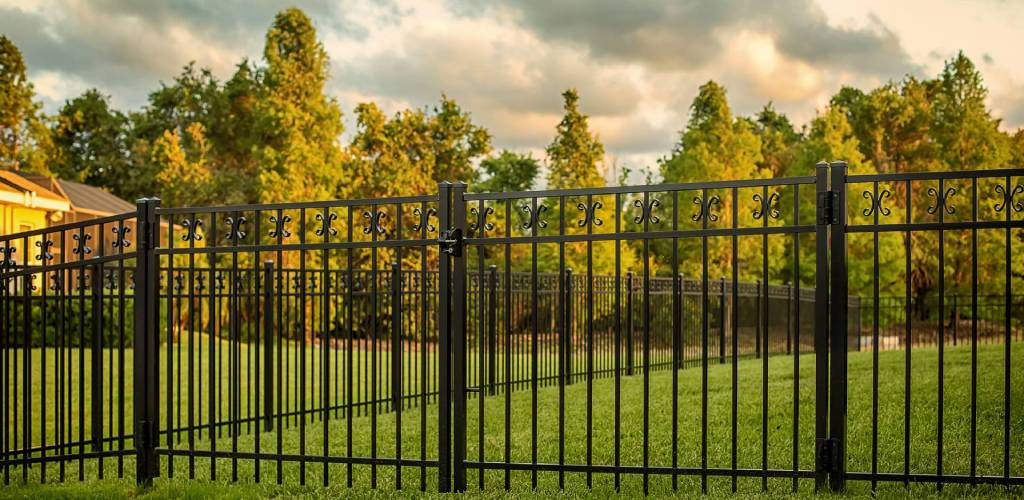All Categories
Featured

When considering installing a fence on your property, one of the most essential actions is to comprehend whether you require a license. The particular authorizations required can differ depending on your location, the type of fence you prepare to set up, and the height or placement of the fencing.
Why You Need a License for a Fencing Installation. The permit process aids local authorities confirm that your fence does not interfere with website traffic presence, respect your property lines, or violate height restrictions. Mounting a fence without a license can result in fines, removal of the fencing, or delays in building, so it's essential to examine whether an authorization is needed before beginning your project.
Sorts Of Authorizations You Might Need. There are a few usual kinds of authorizations you may require for a fence installation:
Structure Permit. A structure permit is one of the most usual authorization needed for fence installments. This license guarantees that the fence satisfies safety and security standards and is constructed according to neighborhood building regulations. A building license is normally required if the fence exceeds a certain elevation (typically 6 feet), is made from specific products, or lies near a public walkway or road.
Zoning Authorization. A zoning license may be required to confirm that your fence abides by regional zoning regulations. Zoning guidelines can determine where a fencing can be put on your property, how high it can be, and whether it is enabled in specific areas (such as along property lines or ahead backyards) For example, some municipalities have guidelines restricting the elevation of surround the front lawn to guarantee exposure for pedestrians and motorists.

Trouble License. You might need a trouble license if you are constructing a fence near your residential property line or close to a street. A setback refers to the range a framework, consisting of fencings, should be from the home line. Problem guidelines differ by place, and ensuring that your fencing is placed correctly can protect against disputes with next-door neighbors and prevent infractions.
Homeowner Association (HOA) Authorization. You might require authorization from them in enhancement to local licenses if you live in a community governed by a Homeowner's Association (HOA) HOA policies typically cover the sort of products, elevation, style, and shade of fencings. Also if your city government does not need a license, your HOA might still have details standards that need to be complied with.
How to Obtain a Fencing Authorization. To apply for a fencing permit, you'll need to call your local building division or planning office. The application procedure generally includes submitting a kind, paying a charge, and submitting a site plan of your property that reveals the suggested place of the fence. You might likewise need to consist of details concerning the products, height, and design of the fence.
In some cases, a local official might require to evaluate your building prior to authorizing the authorization. When the permit is granted, you will be licensed to continue with your fence installation.
When Is an Authorization Not Needed? In particular scenarios, a license may not be called for. These situations can include:
Low Elevation Fences: In many areas, fencings that are listed below a specific height (usually 3 to 4 feet) might not require a permit, particularly if they are positioned in the backyard or other non-visible locations.
Fencing Substitute: If you're changing an existing fencing with the exact same height and product, some areas may not require a new license.
Non-Obtrusive Fences: Momentary or decorative fences, such as those made use of for horticulture or landscape design functions, might not require authorizations as long as they are not irreversible and low.
Nevertheless, it is necessary to inspect with your regional zoning office or structure division, as guidelines can vary by jurisdiction.
Consequences of Not Getting an Authorization. Stopping working to get the essential authorizations can lead to significant repercussions. These include penalties, compelled elimination of the fencing, or perhaps delays in construction. Additionally, if your fencing does not fulfill neighborhood laws, you might face legal concerns with next-door neighbors or neighborhood authorities.

Verdict. When setting up a fence, it's crucial to research the authorization needs in your location. By making certain that you adhere to regional regulations and obtain the needed licenses, you can avoid costly blunders and ensure that your fence is legally certified. Get in touch with your local building department, HOA, and zoning office to establish what permits are needed for your details fencing project. This step is essential to secure both your investment and your home's worth.
Latest Posts
NAPA AutoCare Certified: Trust Montclare Auto Repair for Quality Service
Published Apr 20, 25
2 min read
Save Big with Montclare Auto Repair Deals - Hurry, Don’t Miss Out!
Published Apr 20, 25
2 min read
Gas Allie's: A Retro Dining Experience at FunCity Resort
Published Apr 19, 25
1 min read
More
Latest Posts
NAPA AutoCare Certified: Trust Montclare Auto Repair for Quality Service
Published Apr 20, 25
2 min read
Save Big with Montclare Auto Repair Deals - Hurry, Don’t Miss Out!
Published Apr 20, 25
2 min read
Gas Allie's: A Retro Dining Experience at FunCity Resort
Published Apr 19, 25
1 min read